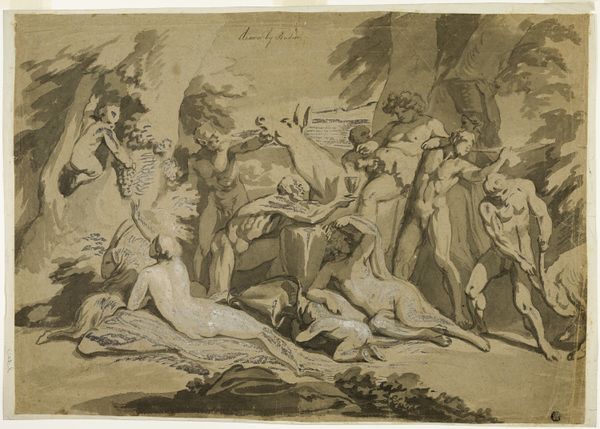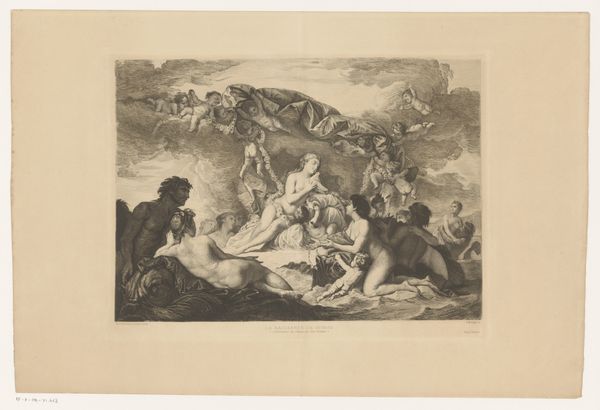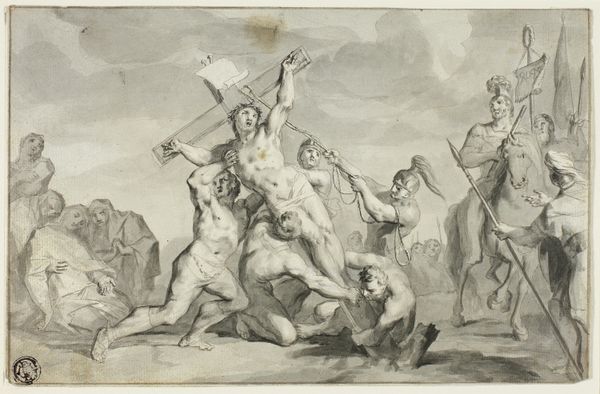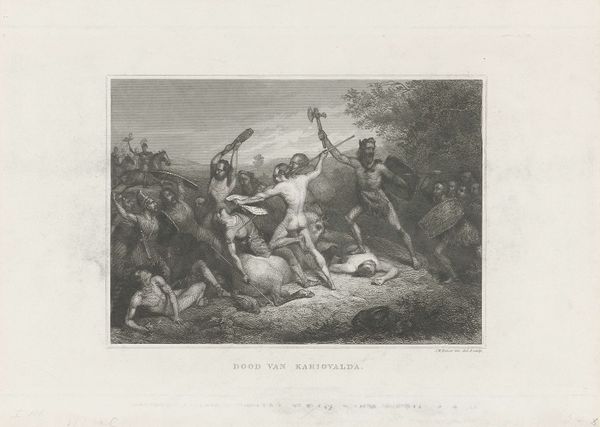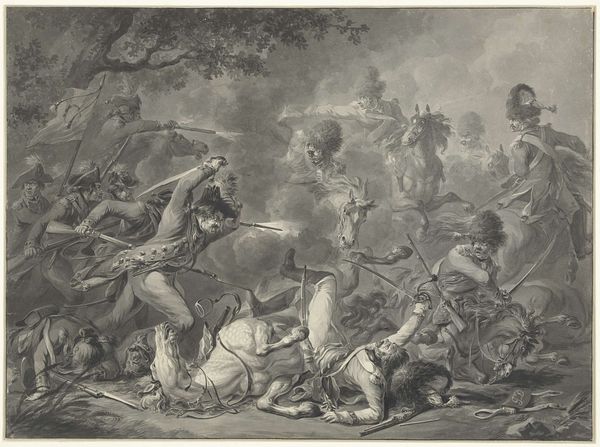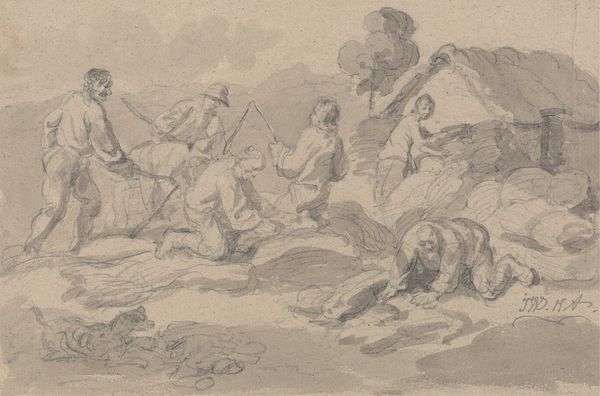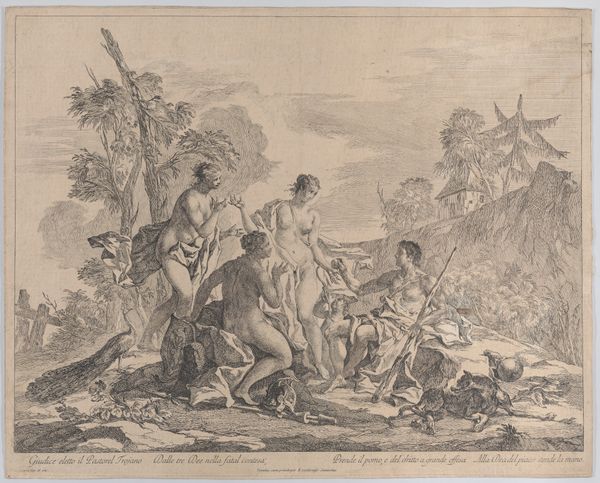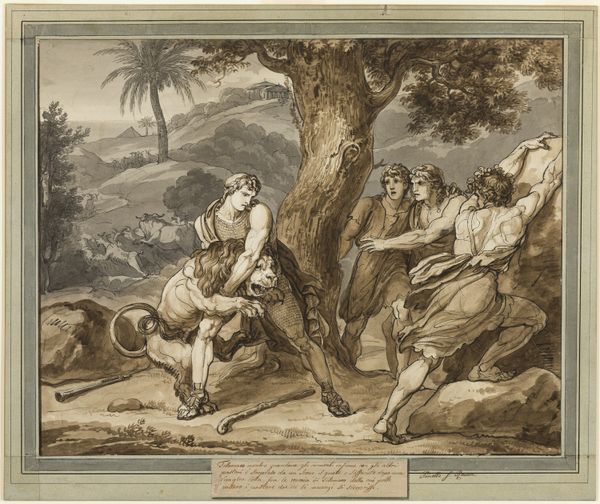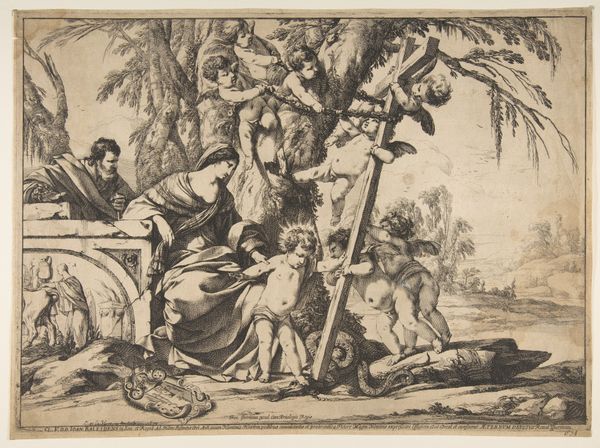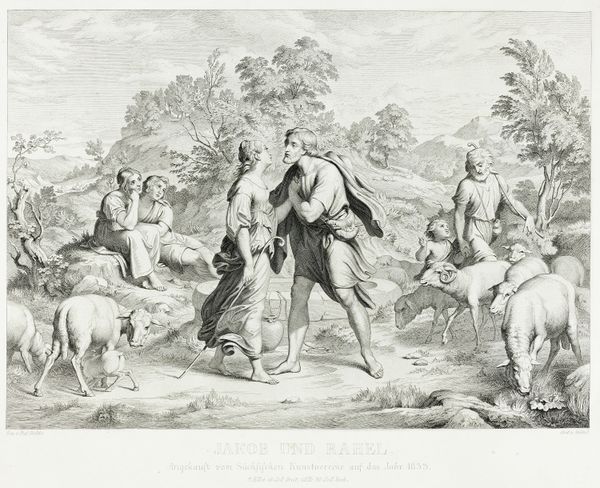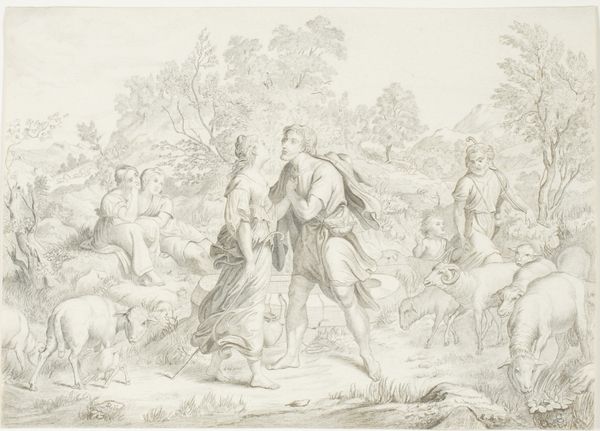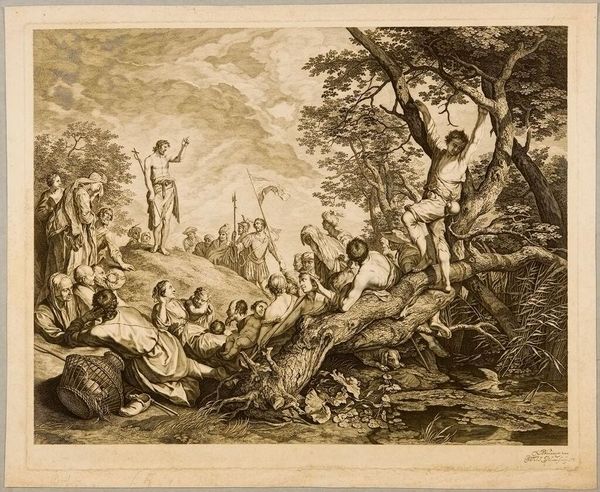
drawing, print, paper, ink, chalk, graphite, pen
#
drawing
#
narrative-art
# print
#
pencil sketch
#
landscape
#
figuration
#
paper
#
ink
#
pencil drawing
#
chalk
#
graphite
#
pen
#
history-painting
Dimensions: 259 × 285 mm
Copyright: Public Domain
Curator: Right now we’re standing in front of "Scene from Cymbeline" by Samuel John Stump. It's an undated work, held here at the Art Institute of Chicago. Stump employed pen, ink, graphite, chalk—a whole orchestra of drawing materials—on paper. What leaps out at you? Editor: Chaos, actually! It's a swirl of figures, mostly rendered in sepia tones, which lends it this slightly faded, dramatic feel, as if lifted straight from a dream—or a rather unsettling historical pageant. Curator: That sense of dramatic narrative is key. "Cymbeline," one of Shakespeare's more obscure plays, involves love, betrayal, mistaken identities...it's a proper stew! This drawing likely depicts a key moment of conflict. Editor: I'm drawn to how Stump captures the characters' poses and their garments in distress. Is he intentionally showing these women as both ornamental and caught amidst this surge of male power? Look at how helpless the seated woman seems, posed precariously. Curator: Absolutely. It’s playing into historical painting conventions. Consider too the iconography of the wild boar attacking the figure, that’s a traditional symbol of courage and fortitude when battling inner demons. The visual echoes resonate powerfully even if the viewer doesn't consciously grasp those precise details. Editor: It reminds us, too, how artists often wrestled with Shakespeare. The layers of interpretation become fascinating to tease apart. A painter picks a single point to fixate upon, but a stage director may change that focal point at will...it's interesting how much visual symbolism may hinge upon a painter's perspective, whether knowingly or not. Curator: True. What's intriguing is that it leaves us pondering not just the scene itself, but all the choices embedded in bringing it into view. Each stroke seems like another question mark hovering above Shakespeare's verse. Editor: Exactly! I mean, looking closer, this seems as much about artifice as artistry – the costumes, the carefully constructed scene. And maybe that's the point: History isn’t always what it seems. This piece embodies ambiguity on all fronts, leaving the viewer intrigued long after our time with the picture concludes. Curator: Very true, very true.
Comments
No comments
Be the first to comment and join the conversation on the ultimate creative platform.
